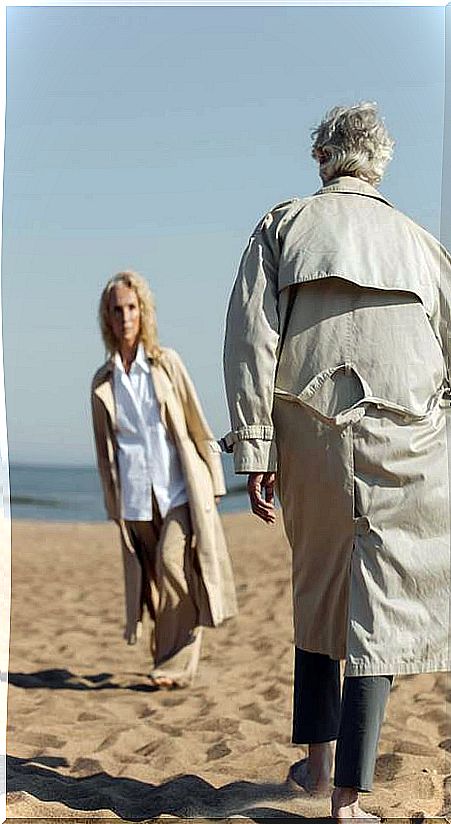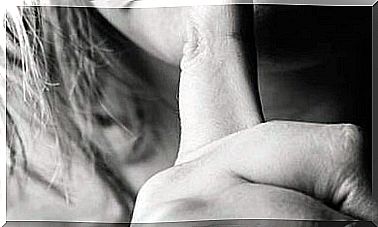What Distance Do We Usually Keep With Others And Why
In times of pandemic we are asked to maintain a safe distance but the idea of social distancing had already been widely studied from psychology. At what distance do we feel most comfortable? Does social distance always imply an emotional distance? It depends.

During the pandemic, the concept of safety distance has become popular, which has been determined at 1.5-2 meters. But the concept of social distancing is not new. Psychology has studied the distance we usually maintain with others in different contexts and how, without trying to calculate distances, we often exercise a distancing or a social approach.
Depending on the type of relationship you have with certain people, there is a greater or lesser physical approach. “There are studies that guarantee that without any intention and in the face of what we know someone, a certain proximity or distance is favored. This allows us to seek greater depth in the details and better focus our attention, ” says psychologist Demian Todo Martí.
“Reports that speak of the types of interpersonal distance, state that in social events with strangers or job interviews, a distance of 1.2 and 3.5 meters is maintained. Something that is far from whether we are with close friends or acquaintances (14 cm and 120 cm). In love relationships the distance ranges between 45 cm and none ”, assures this specialist.
At what distance do we usually interact with other people?
It is common to hear from someone (or request at a particular level) the desire to enjoy and reach for a time, their own, intimate and private space. That is, the vital space of each subject.
Psychology experts report that this requirement usually occurs when a certain burden due to other people is appropriate and the need for solitude and non-invasion prevails.
Many experts have studied for years the concept of personal space and also the different distances that we establish with people depending on the relationship we have with them. There is a zoning proposed by Edward T. Hall. These zones are:
- The intimate area: Between 15 and 45 centimeters. We share this space with the people closest to us (partner, family, close friends and pets). Within this area there is a smaller area, which extends from the skin up to 15 centimeters away, when there is physical contact and which forms the most closed intimate area.
- The personal zone: Between 45 centimeters and 1.22 meters. It is the distance at which we keep ourselves from others at parties, social events and meetings with friends.
- The social zone: Between 1.22 meters and 3.60 meters. The distance we maintain with strangers is the result.
- The public area: It is higher than 3.60 meters. It is the distance in which we feel most comfortable when we are in front of a large group of people.
The figures of the distances can vary and “must be respected according to cultures and people”, in Hall’s conclusions.
In the book The Language of the Body , by Allan and Barbara Pease, it is said that cultures like the Japanese are used to large numbers of people. This results in individuals having less personal space.
In Northern Europe there is a need for more personal space. This causes a reputation for little closeness in dealing with the other.
The psychologist Marc Muñoz suggests that it would be interesting to study social distance in other situations. “An example would be to deduce the relationship between two people based on how they hug, in such a way that the less distance between their hips, the greater trust there will be between them.”
“It would also be necessary to appreciate the differences between women and men in terms of distances or what happens when entering a closed space such as an elevator in which we tend to avoid eye contact since we cannot maintain a comfortable social distance”, adds Muñoz .
Why some people are relieved by social distance
In these days of health crisis there are people who feel more comfortable and secure by maintaining a safe distance from others.
In the case of children with respect to other individuals, change the frequent “give him a kiss”. “Like us, we can decide who enters our private space . The little ones can do the same, something that can be a relief for them ”, adds Carmen Picazo, health psychologist.
For other subjects it is more complicated. Picazo agrees that the distance maintained with other people is not the same for everyone and refers to some factors that intervene:
- Personal characteristics.
- Learning / education received.
- Type of society in which individuals develop.
- Type of relationship between people.
- The context.
Safety distance: an invisible barrier
A large part of the population uses closeness and physical contact to convey what cannot be demonstrated in words. “During these months there has been a very abrupt change in this regard,” declares Todo Martí.
“We are obliged to deal with friends or family from a distance, as if they were strangers,” adds the professional.
Human beings live in community and we interact with other subjects. “It is clear that when we share a physical space, whether with acquaintances or strangers, we maintain a certain distance. This zonal distance communicates and depends on the type of relationship we have with these people. However, our personal space also influences, ”says Marc Muñoz.
“ We lose information that was provided to us by senses such as smell or touch. Kisses or hugs have been replaced by smiles hidden under a mask. We have a continuous feeling of needing closeness and we restrain ourselves daily for the common good, feeling our people a little ‘further away’ ”, declares Demian Todo Martí.
For Todo Martí, “the social distance so necessary in these times is indirectly an invisible barrier that we have to put in our previously close relationships.”
How does this affect us? “It is necessary to delve deeper into the subject and develop a clear differentiation between concepts. Social distance does not mean emotional distance ”, assures the health psychologist Carmen Picazo.
“Although, undoubtedly, so that the latter does not suffer, we must practice other forms of contact with our loved ones,” says Picazo.
“It is giving way and greater relevance to deficient verbal communication in general terms in terms of flattery is concerned.” An effort should now be made to pronounce the “I love you” and the qualifying adjectives referring to a loved one that were previously taken for granted “, concludes the expert.









